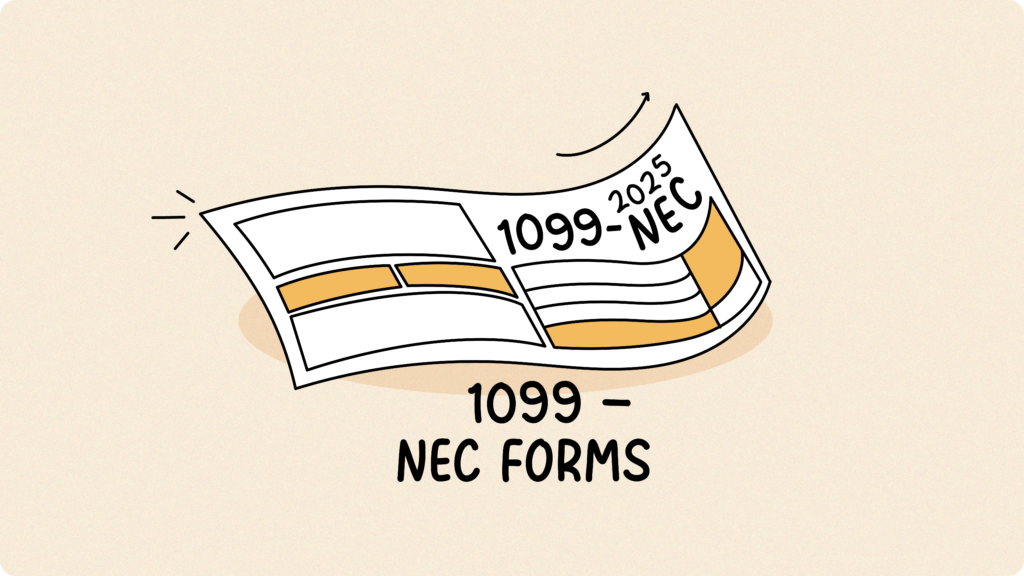1099-NEC Forms: A Complete Guide for Businesses Hiring Independent Contractors

Reporting payments to independent contractors? This guide explains everything you need to know about the 1099-NEC form, from who needs it to how to file it correctly. What is a 1099-NEC Form? The 1099-NEC (Nonemployee Compensation) form is used to report payments made to independent contractors, freelancers, and other non-employees for services rendered. It’s how the IRS tracks payments to self-employed individuals and ensures they’re reporting their income correctly. This is different from a W-2, which is used for reporting wages paid to employees. Who Needs to Issue a 1099-NEC? Businesses of all sizes are required to issue a 1099-NEC if you meet all of these conditions: Who Doesn’t Get a 1099-NEC? There are some key exceptions: The Importance of Form W-9 Before you even start working with a contractor, have them fill out a Form W-9 (Request for Taxpayer Identification Number and Certification). This form collects essential information you’ll need for the 1099-NEC, including: Getting the W-9 upfront saves you a lot of time and hassle later on. If a contractor is operating as an LLC, the W-9 will tell you how the LLC is taxed (as a sole proprietorship, partnership, C-Corp, or S-Corp), which helps you determine whether a 1099-NEC is required. Filing Deadlines and Penalties The deadline to file 1099-NEC forms with the IRS and provide copies to recipients is January 31st. Missing this deadline can result in penalties, which can range from $60 to $330 per form, depending on how late it is. Intentional disregard of the filing requirements can lead to even higher penalties. Key Takeaways and Best Practices By understanding the rules and following these best practices, you can navigate the 1099-NEC process with confidence and avoid potential penalties.